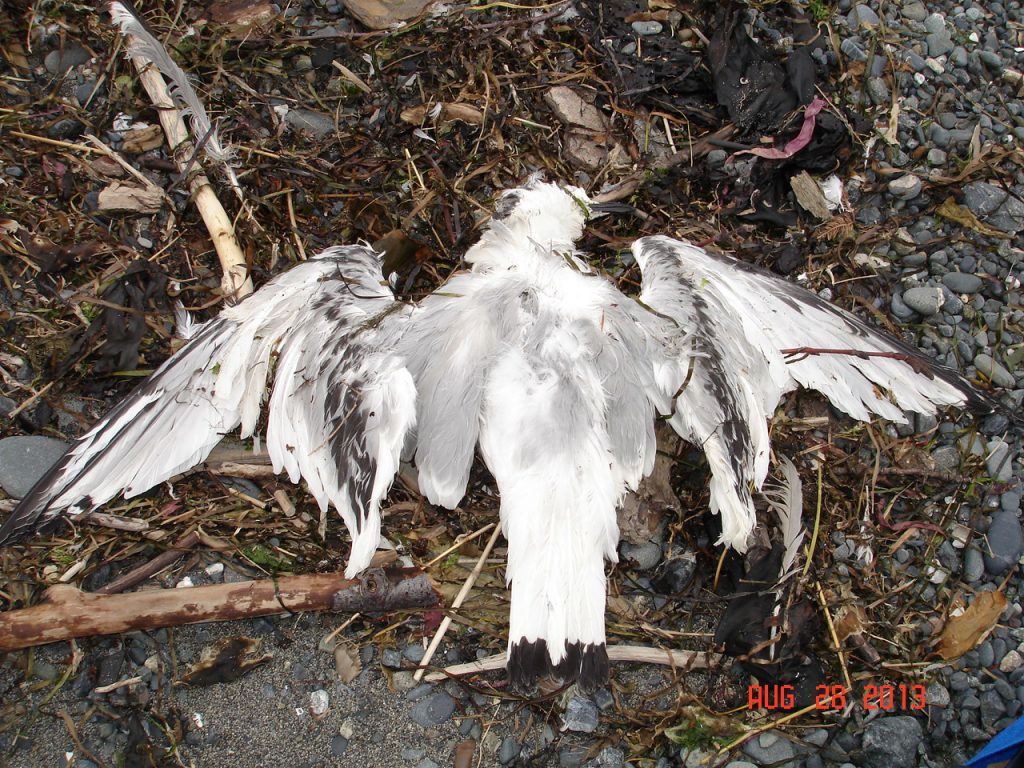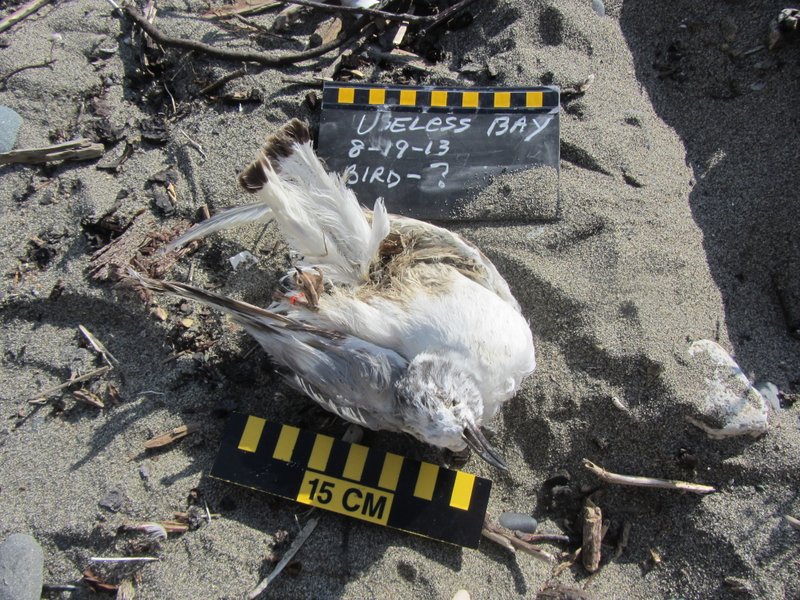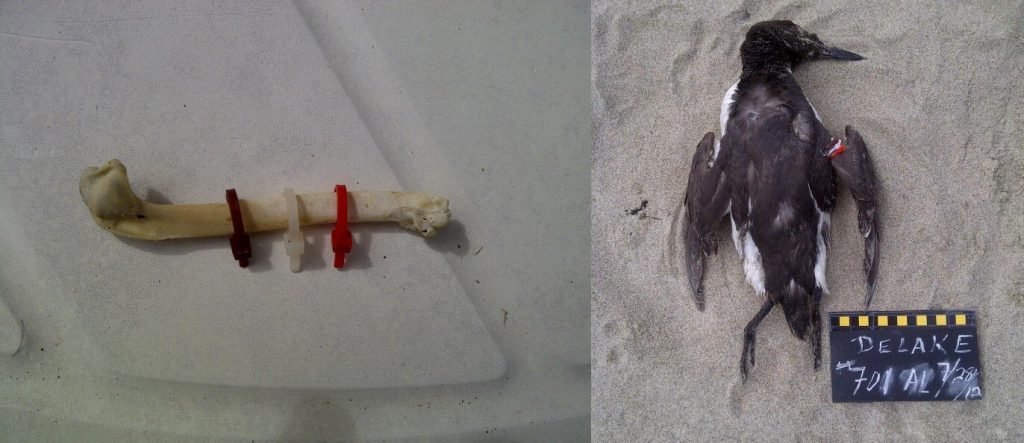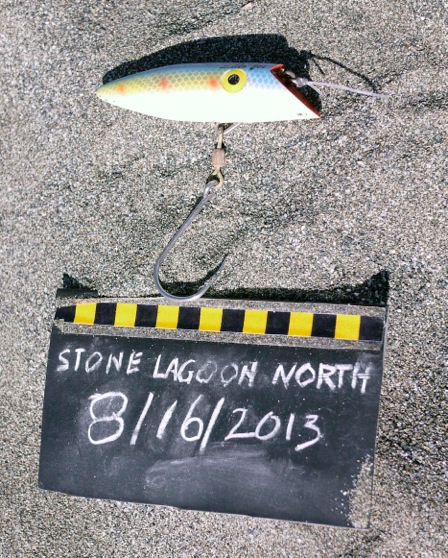We hope everyone had a nice short week last week. There’s evidence that many of you even “labored” for COASST over Labor Day weekend. Thanks for that! Eventhough it’s the University of Washington’s summer break, things aren’t slowing down at the COASST office. Lots of great data continues to pour into our mailbox. Here are a few interesting finds sent our way recently:
A Black-legged Kittiwake found by BJ in the Gulf of Alaska. Leg color would be a dead giveaway for this bird, but we didn’t want it to be that easy for all of you! Let’s turn to the Alaska wing key: “gray mantle, some species with dark tips and/or stripes on mantle” (this has both, actually). We’re looking at a “broken diagonal stripe from wrist to elbow” and the secondaries are white, not black – wing chord of 30 cm means we have a Black-legged Kittiwake – immature.
We do find a few of these guys down in the Lower 48:
-Using the West Coast wing table? Choose size=large (29-32cm), predominantly gray mantle, with black wing tips (leaves: Black-legged Kittiwake, Red-legged Kittiwake)
-Using the West Coast wing key? Choose gray upperwing, dark-to-black wingtips, and mottled stripe from elbow to wrist – that’s the Black-legged Kittiwake-juvenile (wing chord of less than 29 cm – otherwise it would be a Caspian Tern-juvenile).
In North America, the Black-legged Kittiwake breeds in Alaska, and northeastern Canada, winters across the North Atlantic and North Pacific. BJ’s beach is right near one colony, nesting on the Homer ferry terminal.
A Bonaparte’s Gull found by Candace in the Puget Sound. BOGU are just rare enough in the Pacific Northwest not to be featured in Beached Birds, only in Beached Birds-Alaska. Looks a lot like the Black-legged Kittiwake we just saw, but hey – did you spot the feet? Not black. Let’s turn back to the Alaska wing key: gray mantle, some species with dark tips, and that mottled upperwing stripe, but in this case secondaries are dark (see left wing). The wing chord also helps us out: BOGU=25-27cm, a little shorter than the BLKI. Live Bonaparte’s Gulls are normally seen in Puget Sound during their migration (Mar-Apr) to Canada and Alaska, though some stick around in small numbers throughout the winter time.
A Black-footed Albatross found by Jane and Marilyn on the North Coast of Washington. Boy can we see the foot clearly on this one! Three webbed toes and a huge foot (tarsus >75 mm) puts us in the Tubenose: Albatrosses foot type family. From there, we choose between the only three albatross species in the North Pacific (22 worldwide): Black-footed, Laysan, Short-tailed. Dark feet, face, and neck rule out Laysan. Short-taileds change plumage from all dark to mostly white but have WAY huge (129-141mm!), hot pink bills – see outline on TN20 or TN14(AK). A long-distance, ocean traveler, this bird likely calls Midway Atoll, or Laysan Island home (73% of the world’s population lives in these TWO places), to raise chicks, winter-spring.
A Common Murre bone refound by Tom in Oregon North. This bird was tagged on Tom’s first survey over a year ago. Recently, he refound the bone with the tags still in place. Note how the cable ties are tightened nicely around the right wing bone. Good tag placement ensures that COASST birds stay tagged and identified for remainder of their time on the beach: use the innermost wing bone, tie tight, clip tie ends!
A fish hook and lure found by Joanna in California. Hooks account for about 17% of the bird entanglements documented by COASST and are second only to fishing line. As we’ve mentioned before, if you see something like this on your beach, it’s best to pack it out.





